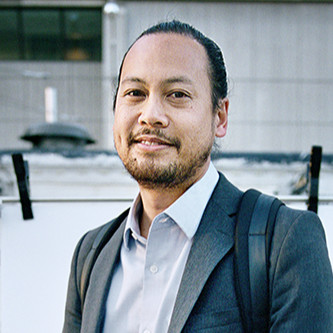Can the Senior Care Industry Survive Without AI?
Artificial intelligence (AI) is rapidly transforming the senior care industry, affecting everything from scheduling workflows to real-time health monitoring. By streamlining operations and enhancing the quality of care, AI empowers senior living communities to operate more efficiently while meeting residents’ needs more effectively. As adoption grows, AI is no longer a futuristic option—it’s becoming a cornerstone of daily operations. But just how critical is this technology? And more importantly, can the industry survive without it?
How and Why AI Is Essential in Senior Care

Carlo Perez, chief product officer at SafelyYou
AI is becoming essential to the senior care industry because it addresses some of the most pressing challenges the industry faces, including the labor shortage and heightened resident acuity. “As our population ages, the demand for care will only grow, and the gap between the availability of caregivers and the number of individuals needing care will only widen,” says Carlo Perez, chief product officer at SafelyYou. “AI empowers existing teams to be more efficient and effective, especially in areas such as marketing, operations, and risk mitigation. Rather than starting from scratch, AI enables care teams to act on intelligent tangible insights—saving significant time while improving care quality.”
Shelly Sun Berkowitz, CEO and founder at Founder 2 Founder, founder and executive chairwoman of BrightStar Care, a national home healthcare and medical staffing company, echoes Perez’s sentiments about how AI can help the senior care industry keep pace with increasing care demands. She highlights the importance of the relationship-based care model, and that AI will not replace the caregiver-to-client relationship that’s the foundation of quality care. “However, companies must look for every opportunity to reduce costs by enhancing efficiency through the use of AI and other technological evolutions while preserving these critical human connections,” says Berkowitz.
The senior care model is already stretched thin, and AI can help prevent burnout, broken workflows, and missed revenue. “AI isn’t a future value-add, it’s the only way many communities can keep up without exhausting their teams,” says Michael Kalpouzos, founder and COO of PAIM. “That’s not a ‘nice to have.’ That’s the difference between growing and falling behind.”
Predictions for AI and the Senior Care Industry

Shelly Sun Berkowitz, CEO and founder at Founder 2 Founder, founder and executive chairwoman of BrightStar Care
Many senior care communities are already widely implementing AI, using it to streamline and enhance processes like fall prevention, scheduling, payroll processing, health monitoring and predictive analytics, and chronic disease management. Berkowitz predicts that as the technology continues to evolve in the next decade, we will see significant advancements in several areas.
Berkowitz predicts that AI platforms will introduce cognitive health assessments that will be able to detect early signs of Alzheimer’s and other cognitive challenges. She notes that intelligent AI-powered solutions are in development. They will integrate care planning, resident safety, staff efficiency, and emergency call functionalities into a single platform for efficient and comprehensive application. Berkowitz also predicts that AI will impact operations by allowing communities to quickly determine their exact staffing levels and labor distribution based on resident needs and the community’s physical layout.
Perez believes AI will redefine the senior care industry, with communities using the technology shifting from reactive problem-solving to proactive and predictive operations. “Communities that embrace AI will gain vastly improved visibility and continuous intelligence—empowering them to anticipate staffing challenges, mitigate resident risk, and strengthen family satisfaction—ultimately driving longer lengths of stay and meaningful gains in net operating income,” he says.
The Risks of Delaying AI Adoption

Michael Kalpouzos, founder and COO of PAIM
With AI having such a tremendous effect on the senior care industry, communities that delay adopting the technology could face disadvantages. “Every day without AI is a day your team falls further behind,” says Kalpouzos.
Berkowitz highlights that communities could experience financial disadvantages, since AI could facilitate more efficient operational practices to reduce costs. Without AI to support staff capabilities, communities may have higher labor costs. Without predictive analytics, communities could miss early health issue warning signs, and lack of AI-powered monitoring and fall detection systems could increase fall incident rates. “Communities without AI may lose residents to competitors offering superior monitoring, safety, and personalized care and communities without AI may have higher costs requiring higher rent,” she says.
According to Perez, the greatest risk communities face by not implementing AI is that they could fall behind in clinical outcomes and business performance. He states that communities that delay AI adoption may see:
- Poorer resident retention, especially in the first 90 days
- Lower length of stay and reduced net operating income
- Higher fall rates and emergency room visits
- Inability to compete with AI-enabled communities offering better care visibility to families
“Additionally, as other industries adopt AI and drive efficiencies, senior care communities risk losing relevance and talent by not keeping pace with innovation,” says Perez.
How Senior Care Communities Can Minimize Risks with AI Adoption
As with any technology, there are risks that come with AI use, and some communities may be hesitant to implement new technology. “The greatest risk with AI adoption is overtrust—believing it’s always right or treating it as a replacement for human oversight,” explains Perez. He notes that no system is accurate 100 percent of the time. For example, communities that use AI to generate care plans or detect falls require human validation to ensure the technology results are safe and correct.
To mitigate potential risks, Perez recommends that communities evaluate AI solutions based on their outcomes, not on the technology’s features. When evaluating AI, communities should ask for proof of its accuracy, including how it’s documented. Choose organizations with a proven track record and require long-term success records. “Ask demanding questions about AI security and privacy,” he advises, and ask for detailed data retention policies, too.
AI provides senior care communities with powerful tools to enhance both the quality of care and day-to-day operations, which are rapidly becoming essential to the industry’s success. “I don’t see AI as a disruptor in senior care. I see it as overdue infrastructure,” says Kalpouzos. “Done right, AI becomes a support system, not a threat, working as a catalyst for sustainable care.”

Paige Cerulli is a contributing writer to i Advance Senior Care.
Related Articles
Topics: Facility management , Featured Articles , General Technology , Information Technology , Operations , Risk Management











